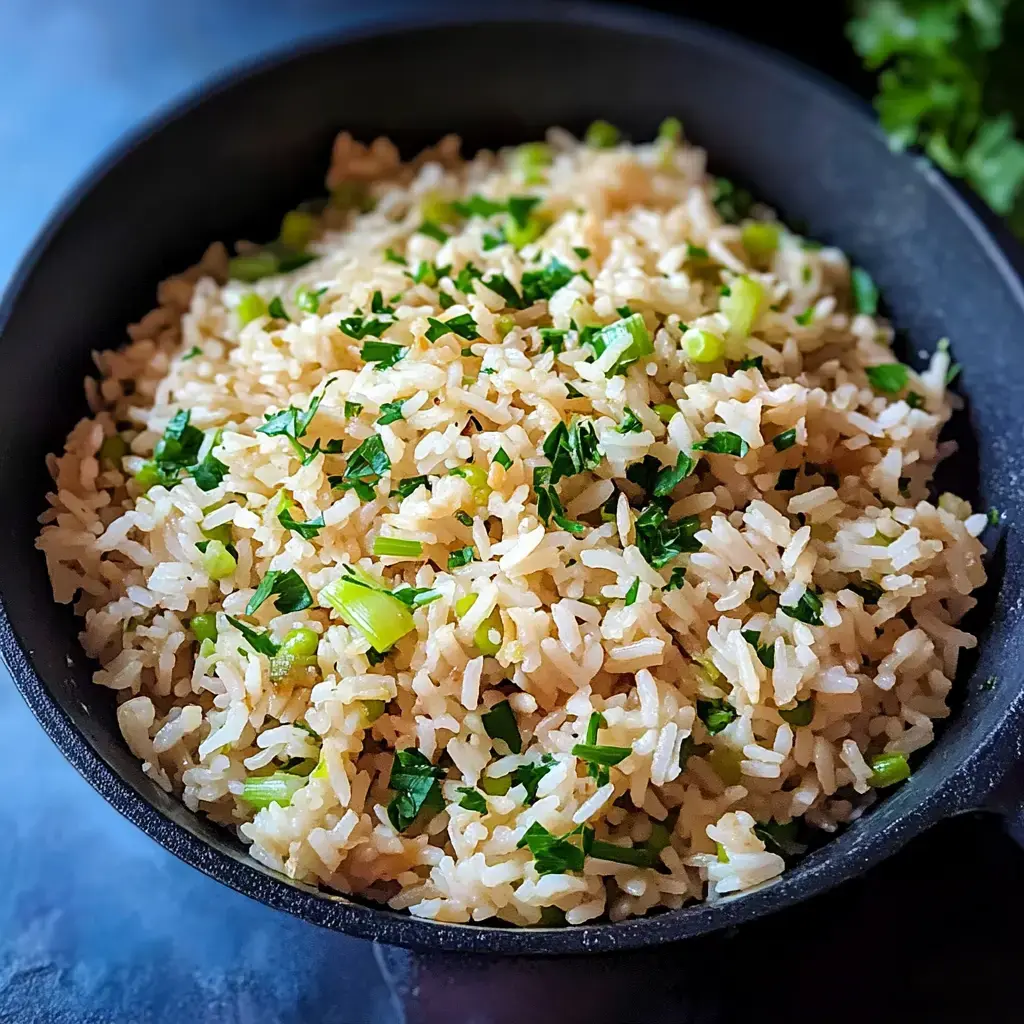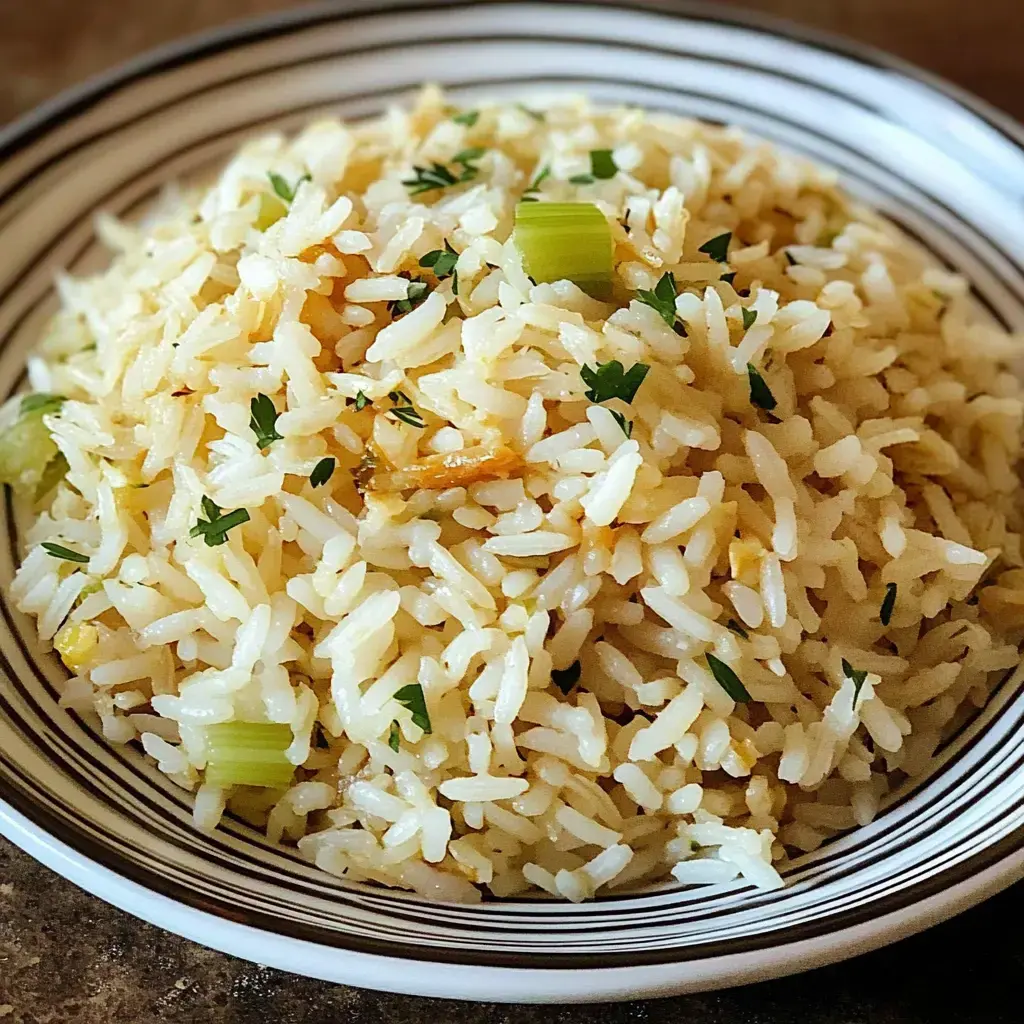 Pin it
Pin it
My family begged me to share this rice pilaf recipe after I brought it to every potluck last summer. It all started when I messed up plain rice one night and decided to get creative with what was in my pantry. Now it's become my go-to side dish that even my pickiest nephew asks for by name. The secret? Taking time to toast the rice until it smells like popcorn - trust me on this one!
Why You'll Love It
This isn't your boring old rice side dish. The grains come out fluffy and separate - never mushy or sticky. It soaks up all the flavors from the stock and butter, and those little bits of golden onion add the perfect touch. Best part? You can make it while you're working on your main dish, and it's totally fine if you forget about it for a few minutes (I sure have!).
Ingredients
- For the Rice Base:
- 1 cup long-grain rice (basmati or jasmine)
- 2 tablespoons butter or olive oil
- 1 small onion, finely diced
- 2 garlic cloves, minced
- For the Liquid:
- 2 cups good-quality chicken stock
- 1/4 teaspoon sea salt
- Fresh black pepper
- Optional bay leaf
- Optional Add-ins:
- Frozen green peas
- Diced carrots
- Slivered almonds
- Fresh herbs like parsley
- Kitchen Tools:
- Heavy-bottomed saucepan with tight lid
- Wooden spoon for stirring
- Fork for fluffing
- Fine-mesh strainer for rinsing
Step-by-Step Instructions
- Getting Started
- First, chop your onion nice and fine - big chunks just don't work here. Get your butter melting in a pot over medium heat. Once it's bubbling, toss in those onions and let them cook until they're soft and starting to turn golden. Add the garlic last, just for a minute.
- The Important Part
- Now dump in your rice and keep stirring. This is where the magic happens - you want to coat every grain with butter and let it get a little toasted. Wait until you can smell that nutty aroma, usually about 3 minutes.
- Adding the Liquid
- Pour in your stock - it should make a satisfying sizzle. Give everything one good stir, pop the lid on, and turn the heat down low. Set your timer for 18 minutes and walk away - no peeking!
- The Finish Line
- When time's up, kill the heat but leave the lid on for another 5 minutes. Then fluff it up with a fork and add whatever extras you like.
Pro Tips for Success
Here's what I've learned from messing this up more times than I'd like to admit: Don't skip rinsing the rice - it really does make a difference. Keep that lid on tight while it's cooking - every time you peek, you lose steam. And if you're adding veggies, frozen ones work better than fresh - they won't get mushy. Oh, and always check your rice package for liquid ratios - different types need different amounts.
 Pin it
Pin it
Serving Suggestions
This goes with just about everything! I love it alongside grilled chicken or fish. It's perfect for soaking up gravy or stir-fry sauce. Want to make it a meal on its own? Throw in some cooked chicken and extra veggies. For fancy dinners, I mold it in a cup and flip it onto the plate - looks super impressive!
Storage and Make-Ahead Tips
Leftover rice pilaf keeps great in the fridge for about 4-5 days. Just pop it in a microwave-safe container and add a splash of water when you reheat it. If you're planning ahead for a party, you can cook the onions and toast the rice earlier in the day, then finish it just before dinner. Just don't try freezing it - trust me, it's never the same after!
Frequently Asked Questions
- → Why brown the rice first?
Browning adds nutty flavor and keeps grains separate. Don't skip this step - it's what makes pilaf special.
- → How much liquid do I need?
Check your rice package - brands vary. Most need 2 cups liquid per cup rice, but some need less.
- → Can I peek while it cooks?
Nope! Keep that lid on tight. Steam is part of the cooking process. Even checking ruins the texture.
- → Stock or water?
At least half stock gives best flavor. Water works but won't be as tasty.
- → Why let it rest?
The 10-minute rest lets rice finish absorbing liquid evenly. You'll get fluffier rice.
Conclusion
Rice pilaf is a simple yet flavorful side dish that elevates basic rice by browning it in oil and cooking with vegetables and stock. The technique creates a more complex, nutty flavor profile compared to standard boiled rice.
